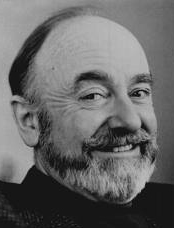
A map that includes most of the Broadway theaters, but it isn’t quite large enough and not completely up to date.
Having previously taken a quantitative look at new Broadway musicals and musical revivals, it was inevitable that I would look at play production on Broadway as well. So as not to bury my lede, let me begin with the list of playwrights who have had five or more productions on Broadway in the last 20 years, new or revival.
William Shakespeare (13)
Arthur Miller (12)
Tennessee Williams (11)
Eugene O’Neill (9)
Noel Coward, David Mamet, Neil Simon, Tom Stoppard (8)
August Wilson (7)
Anton Chekhov, David Hare, Terrence McNally, George Bernard Shaw (6)
Brian Friel, Richard Greenberg, Donald Margulies, Martin McDonagh (5)
What is immediately noticeable among these 17 playwrights? They’re all male. There is but a single playwright of color. Eight are not American. Six were dead during the 20 years examined. If anyone is looking for hard and fast data about the lack of diversity among the playwrights getting work on Broadway, this would be Exhibit A.
Now let’s get detailed. As indicated, I studied the past 20 years on Broadway, from the 1992-93 season through the just completed 2011-12 season; my study of musicals had covered 37 seasons, going back to the year that Chicago and A Chorus Line debuted. The 20 year mark for plays begins with the season that saw Tony Kushner’s Angels in America: Millennium Approaches premiere, arguably a work as significant a landmark in playwriting as A Chorus Line was to musicals.
The 20 year mark also encompasses significant shifts in production by not-for-profits on Broadway: Roundabout started out at the Criterion Center and by last year had three Broadway venues (American Airlines, Stephen Sondheim, Studio 54); Manhattan Theatre Club rehabilitated the Biltmore and began using it as their mainstage (later renaming it the Samuel G. Friedman); and Tony Randall’s National Actors Theatre grew and withered, as the more firmly established Circle in the Square evolved from producing company to commercial venue. Throughout, Lincoln Center Theatre produced in the Vivian Beaumont, considered a Broadway theatre virtually since it opened in the 60s, and continued its practice of renting commercial houses when a big hit monopolized the Beaumont. Commercial productions continued throughout this time in more than 30 other theatres, as did some productions by other not-for-profit producers without a regular home or policy of producing on Broadway.
So what is the scorecard of play production, both commercial and not for profit on Broadway over these last 20 years? 397 productions by 228 playwrights, with more than a quarter of the plays produced written by the 17 men listed above.
What of women? There were 43 women whose work appeared on Broadway in these two decades, but none saw more than three plays produced. The two women with three plays were Yasmina Reza and Elaine May (the latter’s count includes a one-act); four women each had two plays on the boards (Edna Ferber, Pam Gems, Theresa Rebeck and Wendy Wasserstein). Collectively, they make up slightly under 1/5 of the playwrights produced.
Because I have often been party to debates about whether or not not-for-profit companies should be considered part of Broadway, I ran the numbers without the productions of the five companies singled out above (RTC, MTC, LCT, NAT and CITS). Had they not been producing, and had no one taken their place, Broadway would have seen only 253 plays produced in those 20 years, nearly 1/3 less than the actual number, a significant reduction in activity.
And what of the balance between new plays and revivals? The 20 year breakdown of all productions showed 179 new plays and 218 revivals, but with the five not-for-profits are removed, it’s 140 new plays and 113 revivals. That shift is quite notable: the not-for-profit theatres on Broadway have only been responsible for 39 new works on Broadway over 20 years, but they’re the source of 105 revivals. That’s not so shocking, when you consider that NAT and CITS were focused on classics and that Roundabout’s original mission was solely classical work as well. But it certainly shows that without the not-for-profits, fewer vintage shows, whether from the recent or distant past, would have worn the banner of Broadway.
Now let’s go back to the list of playwrights with five or more plays on Broadway in the past 20 years, taking out the not-for-profit work. The results are:
David Mamet, Arthur Miller, William Shakespeare (8)
Neil Simon (7)
August Wilson (6)
Noel Coward, Martin McDonagh, Eugene O’Neill, Tennessee Williams (5)
We drop from 17 playwrights making the cut to only 9, but its interesting to note that playwrights like Miller, O’Neill, Shakespeare, Williams and Wilson remain well represented, even in my theoretical scenario. As for women, the number produced drops to 31, roughly a quarter of the full count.
So what does this tell us, besides being fodder for trivia quizzes and feeding the current affinity for facts via list? It shows us that commercial producers are not all trendy money grubbers without interest in our theatrical past, since a number of classic works were produced under their aegis. That said, without the not-for-profits, the number of revivals overall would have been cut in half, showing how essential they are in maintaining Broadway’s heritage. For new work, the not-for-profits of Broadway play a smaller role to be sure, but its worth noting that a number of major playwrights wouldn’t have had any plays on Broadway in the past two decades without the not for profits, including Philip Barry, Caryl Churchill, William Inge, Warren Leight, Craig Lucas, Moliere, Sarah Ruhl, George Bernard Shaw, Regina Taylor and Wendy Wasserstein. In a startling irony, Sophocles and Euripides both were produced only commercially.
By its methodology, this glimpse at the past two decades inevitably shortchanges the influence of the not-for-profit theatre. It does not consider how many of the plays were commissioned by, developed by and first produced in not-for-profit companies in New York, nationally, or abroad, but many of the new plays in this period have those roots (and unlike musicals, plays are more typically produced without commercial enhancement in not-for-profits, with producers coming in later once a show has begun to achieve recognition). Because I didn’t have reliable resources to parse the partnership and capitalization of each Broadway production, shows from theatres like The Atlantic, New York Theatre Workshop and The Public, or even MTC pre-Biltmore, haven’t been categorized under not-for-profit, though they rightly might be; I believe based on anecdotal observance that (with sufficient time resources and manpower) we would see not-for-profits directly responsible for originating even more new plays.
It would be easy to argue that this study is at best intriguing but limited. After all, on a financial level, plays account for a marginal percentage of Broadway revenues, with musicals yielding the lion’s share of the grosses. One can also argue that Broadway, particularly when it comes to plays, is hardly representative of the full quantity and variety of new work being done in America, an opinion I hold myself.
But so long as Broadway remains a beacon for tourists, for theatre buffs and for the mainstream media, so long as it holds a fabled spot in the national and international imagination, plays on Broadway remain important, even if they are marginalized or unrepresentative. With all of the challenges that face producers, commercial or not-for-profit, who wish to mount plays, the public perception of American drama is still weighted towards Broadway, even if its mix of new plays and classics is but the tip of the iceberg, financially and creatively. We can debate whether Broadway is deserving of its still-iconic status, but so long as it exists, understanding exactly where plays fit in the equation can only serve to help them hold their ground, in the best interest of shows which don’t sing or dance, and the writers who are so committed to them.
* * *
Notes on methodology, beyond what’s explained in the text:
1. Although I have not provided the spreadsheets I constructed in order to work out my statistics, which list every play and playwright produced in the past 20 years, I feel it is incumbent upon me to name the female writers who have been produced on Broadway, with the hope that in the next 20 years, this list will make up a much greater percentage of writers produced: Jane Bowles, Carol Burnett, Caryl Churchill, Lydia R. Diamond, Joan Didion, Helen Edmundson, Margaret Edson, Eve Ensler, Nora Ephron, Edna Ferber, Pam Gems, Alexandra Gersten, Ruth Goetz, Frances Goodrich, Katori Hall, Carrie Hamilton, Lorraine Hansberry, Lillian Hellman, Marie Jones, Sarah Jones, Lisa Kron, Bryony Lavory, Michele Lowe, Clare Booth Luce, Emily Mann, Elaine May, Heather McDonald, Joanna Murray-Smith, Marsha Norman, Suzan-Lori Parks, Lucy Prebble, Theresa Rebeck, Yasmina Reza, Joan Rivers, Sarah Ruhl, Diane Shaffer, Claudia Shear, Anna Deavere Smith, Regina Taylor, Trish Vradenburg, Jane Wagner, Wendy Wasserstein, and Mary Zimmerman.
2. In the case of shows with multiple parts (Angels In America, The Norman Conquests, The Coast of Utopia), I have classified each as a single work.
3. Translations, adaptations, new versions – these are a particular challenge, since the contribution of the translator or adapter requires a value judgment on each and every effort. Consequently, I have chosen consistency, not artistry; for this study, only the original author received credit. Consequently, while David Ives is credited as the author of Venus in Fur, which is adapted from a book, only Mark Twain gets credit for Is He Dead?, even though I happen to know David’s contributions were significant on making the latter play stageworthy. Christopher Hampton is not recognized for his translations of Yasmina Reza’s plays, however elegant they may be, and I have ceded The Blue Room to Schnitzler, since it is firmly rooted in La Ronde. And so on.
4. Special events and one-person shows were judged according to whether, in my subjective opinion, they could reasonably and sensibly be performed by someone other than the author/performer. As a result, Billy Crystal’s 700 Sundays is not included in my figures, while Chazz Palmintieri’s A Bronx Tale makes the cut.
5. The number of plays produced annually on Broadway consistently outnumbers the musicals, despite, as already noted, musicals accounting for the lion’s share of Broadway revenues. I suspect, but haven’t the resources to confirm, that the number of overall performances of plays is also vastly less than the number of musical performances in a given year; numerous limited runs of 14 to 16 weeks for plays, even if there are more of them, are surely overwhelmed by the ongoing juggernauts of The Book of Mormon, Wicked, and others.
6. A handful of plays were written by writing teams: Kaufman and Ferber, Lawrence and Lee, etc. Each playwright was recognized in their own right. The same was true for the rare omnibus productions by separate authors, such as Relatively Speaking from Ethan Coen, Elaine May and Woody Allen.
7. I would have liked to break out the racial diversity of Broadway playwrights over the past two decades, but I had no reliable source for determining the heritage of every author, or how they may self-identify, therefore I felt it best not to guess.
8. It should go without saying that there are a number of playwrights who also work on musicals; if there is any barrier between the forms, it is highly permeable. My studies have by their nature been bifurcated between plays and musicals, but there is more fluidity than these articles might suggest.
9. When classifying plays as new or revival, in cases where they play had not been previously produced on Broadway but had prior life from years or decades earlier, I opted for the Tony Awards’ guidelines of new work being that which has not entered the standard repertory. So Donald Margulies’ Sight Unseen, produced with great success Off-Broadway and regionally over much of the period studied, was considered a revival.
10. I have drawn my data from the well-organized Playbill Vault, which expedited my research immeasurably. My thanks to those who assembled it.
 I don’t know that I saw Kilty during the last 20 years of his life. Perhaps we ran into one another in a few theatre lobbies, I would occasionally hear a little something about his health, but he was long out of my mind and, I fear, the minds of many others who knew him during his lengthy theatrical career. So when I first saw a news story from a small Connecticut publication reporting that he had died, at age 90, in a car crash, I surprised myself with the depth of my feeling.
I don’t know that I saw Kilty during the last 20 years of his life. Perhaps we ran into one another in a few theatre lobbies, I would occasionally hear a little something about his health, but he was long out of my mind and, I fear, the minds of many others who knew him during his lengthy theatrical career. So when I first saw a news story from a small Connecticut publication reporting that he had died, at age 90, in a car crash, I surprised myself with the depth of my feeling.











